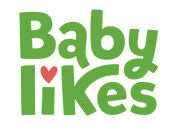Weaning is a special time in your baby’s life. It happens when you introduce solid foods to your baby who’s around 6 months old. Weaning is a gradual process of switching an infant's diet from breast milk or formula to other foods and fluids.
Little by little, you will increase the quantity and widen the range of solid foods that you will give your baby as tolerated. This will continue to happen until your baby’s diet becomes mainly solid food and the same as the rest of your family but in smaller portions.
The weaning process promotes your baby to self-independence with feeding and chewing. Further, it allows your baby to accept a wide variety of food.
Is my baby ready: when to wean?
According to the World Health Organisation, babies’ digestive systems are not developed enough to cope with solid food before they are around 6 months old. This is the reason that we strongly advise parents to consider weaning their kids not earlier than 6 months old.
Actually, the right time to wean your baby is a personal decision because your baby is unique. However, there are clear signs that when observed together can help you determine if your baby is ready for solid foods alongside mum’s breastmilk or infant formula.
- Your baby's birth weight has doubled.
- Your baby can sit up with some support.
- Your baby can control their head and neck movements.
- Your baby can coordinate their eyes, hand and mouth and look at food. They can pick up finger food and put it in their mouth all by themselves.
- Your baby can swallow food. Babies who are not ready will push their food back out.
- Your baby can show they are full by turning their head away or refusing to open their mouth.
But my baby doesn’t want to eat! 😔
Your baby may spill out or refuse at the first attempts of feeding. This is all but natural, you may retry it on another day. It takes time and patience until your baby is able to learn to feed. Your baby will give you cues that you may need to increase the amount of food as he/she shows increased interest in feeding.
Stages of Weaning - taking baby steps
Stage 1: From 6 months - First food should be soft but not mushy
If you think that your baby is ready, then you can start to introduce solid foods at age 6 months. Please note that most of your baby's calories should still come from breast milk or formula.
You can introduce mashed or soft cooked sticks of fruits, and vegetables, one at a time so that your baby can learn the texture and flavour of each type of food. Try carrot, parsnip, sweet potatoes, butternut squash, pears, bananas, or avocado. Some dietitians recommend introducing a few vegetables before fruits. The sweetness of fruit may make some vegetables less appealing.
You can also mix baby rice with milk. Start with a thin texture. You can gradually make the texture thicker as your baby learns to control it in their mouth.
Breast milk is not a good source of iron. After 6 months, your baby will start to need more iron. Once your baby is eating rice cereal regularly, you may introduce other iron-fortified instant cereals.
Stage 2: From 7-9 months:- foods should be soft and easy to chew
You can give other healthy foods such as soft cooked meat such as chicken, mashed fish (check very carefully for any bones), pasta, noodles, toast, mashed hard boiled eggs, and cooked broccoli.
Also, your baby can enjoy full fat milk products such as yogurt, but choose those with no sugar or less sugar.
Around 8-9 months, you can offer finger foods in small amounts. Your baby will probably let you know they are ready to start feeding themselves by grabbing the food or spoon with their hand.
You can offer finger foods like cooked vegetables and fruits (all cooled before eating), washed and peeled fruits, unsalted crackers, pasta and toast strips.
Stage 3: From 10 months - foods should have lumpy textures, contain a wide variety of flavours and harder finger foods
Your baby can now enjoy foods that have lumpy textures, chopped foods and harder finger foods such as apple slices and bread sticks.
So there you have it – the step-by-step guide to weaning your baby. It can be a daunting process, but the good news is that you can start weaning your baby gradually, even if they’re not quite ready to give up the breast or bottle. Just take it slow and easy, following your baby’s cues along the way.
With these tips and a little patience, you and your little one will be on your way to successful weaning in no time! However, if you do find yourself struggling or have any questions that weren’t answered here, be sure to talk to your paediatrician – they will be more than happy to help. And finally, good luck!
Sources:
https://www.ouh.nhs.uk/maternity/feeding/documents/solid-foods.pdf
https://www.nichd.nih.gov/health/topics/breastfeeding/conditioninfo/weaning
http://www.boltonft.nhs.uk/wp-content/uploads/2018/11/NEW-BFF-Parent-Info-Booklet-July-2018.pdf
https://www2.hse.ie/wellbeing/babies-and-children/weaning-eating/weaning/stages/
https://www.rch.org.au/uploadedFiles/Main/Content/nutrition/guide-to-foods-babys-first-year.pdf
https://www.rch.org.au/uploadedfiles/main/content/nutrition/2013nutritionfirstyeardeecd.pdf



